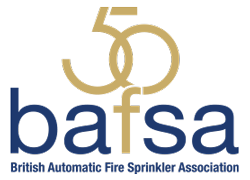how a sprinkler works
All areas of the building to be protected are covered by a grid of pipes with sprinkler heads fitted into them at regular intervals. Water from a tank via pumps or from the service (town) main (if it can give enough flow) fill the pipes.
Each sprinkler head operates only when it reaches its predetermined operating temperature and will then spray water on to a fire. The hot gases from a fire are usually enough to make the thermal element in the head operate. Only the sprinklers in the immediate area of the fire open. The others remain closed. This ensures that no water is applied to areas where there is no fire and reduces the amount of water needed.
The sprinkler heads are spaced, generally on the ceiling, so that if one or more operate there is always sufficient flow of water. The flow is calculated so that there is always enough to control a fire taking into account the size and construction of the building and the goods stored in it or its use.
Sprinkler heads can be placed in enclosed roof spaces and into floor ducts to protect areas where fires can start unnoticed. In a large warehouse sprinklers may be placed within the storage racks as well as the roof.
At the point where the water enters the sprinkler system there is a valve. This can be used to shut off the system for maintenance. For safety reasons it is kept locked open and only authorised persons should be able to close it. If a sprinkler head opens and water flows through the valve it lets water into another pipe that caused a mechanical gong to sound. In this way, the sprinkler system generates and alarm at the same time as controlling or extinguishing the fire. It’s worth noting that only sprinklers can do this with equipment which operates independently of an electrical supply.
